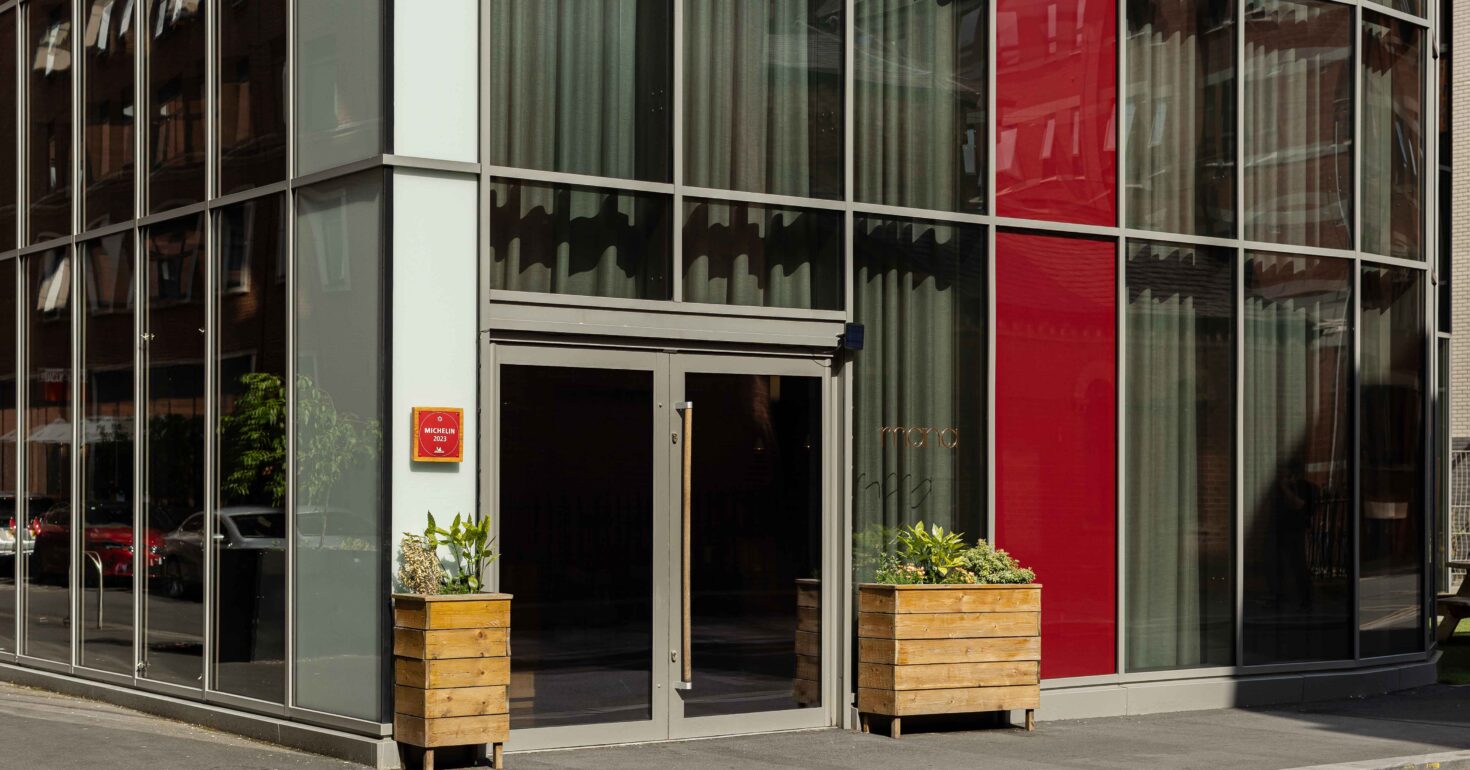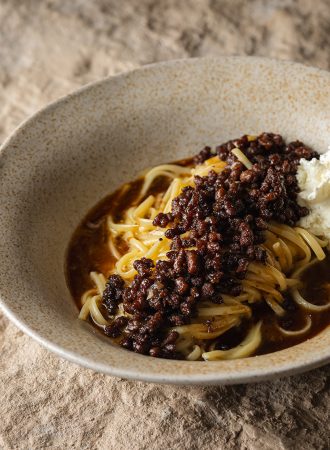Three is the magic number. Ask political orators, ask playwrights, ask De La Soul. It’s also the number of destination restaurants required to make a particular location into a restaurant destination. Is that all clear? No? Well, let me illustrate the point.
You don’t go to a destination restaurant on a spontaneous whim, like an average diner whose choices are based on convenience or a sudden craving. You go to a destination restaurant based on its high reputation, because you are a serious foodie making a significant, long-planned trip. It’s hard to say what makes a restaurant a destination of course, but in this instance, for lazy, universal shorthand, let’s say it could be Michelin-starred.
If a town or city has one such restaurant it will become the go to place for locals seeking special occasion dining, but beyond that? Trekking for hours or committing to an overnight stay for a single meal is toppy for all but the most committed napkin sniffers. That’s why restaurant ‘clusters’, like the Lakes, San Sebastian or Ludlow back in the day, are so important. They tempt high-spending gastro-tourists to travel, stay and daisy-chain multiple lunches and dinners, liberally sprinkling their cash across the local economy as they go.
And yes, to create a cluster, a true restaurant destination, I’d say three is the ‘minimum viable product’.

Hence in the seismic week that two restaurants run by Michelin-garlanded chefs launched here in Manchester – Skof, from Tom Barnes, who earned three stars at L’enclume, and Tender, by Niall Keating, who gained two stars at Whatley Manor (see my ‘Petit Fours’ for more) – it seemed timely to return to Mana, which won Manchester city centre’s first Michelin star for almost half a century back in 2019, and has ploughed that lonely furrow ever since.
A serious restaurant needs a serious review-crew, so in a break from the norm I didn’t bring a plus one as much as a plus four, encompassing the worlds of Mancunian finance, law, and tech – Jack Burnett; George Danczak; Nicolas Konig; and Andy McLintock. I’d connected with each of them via their cultural interests, but as is so often the case it turned out they all also loved food and drink. Yet despite this not one of them had been to Mana, except George, who visited pre-star back in 2018. I felt compelled to right this wrong, through the medium of lunch.

The first thing to say about Mana is that it is a stunner of a room. Beautifully light, cathedral high and cathedral calm, yet unapologetically comfortable. Big tables, big chairs, and big spaces in between – you could run a Formula 1 street circuit around the gaps. The bar sits in the main dining room, as does the entire kitchen, though the space feels unified rather than clunkily multi-functional. Gauzy drapes hide you away from the red brick streetscape of Ancoats, as if this proudly Mancunian restaurant feels no compulsion to fetishise the city. In the best sense, you could be anywhere.
And the service is engaging, informed and pin-sharp professional, as you’d expect from a settled team of hospitality professionals who generally stay for long stints, galvanising into a well-oiled machine. Coincidentally it’s been a female-led front of house team from the start, which is currently run with capable charm by Isobel Flude. Nikolai Kuklenko, ex of Musu, Climat, and the Bull & Bear, is a recent addition as sommelier and is sharpening up the already impressive wine list.
Highlights of our lunch included the first snack, a brittle little croustade cup with a hint of Ritz cracker about it, filled with a puree of sunchoke, the tuber of a sunflower, and buttercup creaminess from Wyfe of Bath sheep’s cheese. There was some fermenting going on in there too, and mushrooms, in the form of oil and powder, giving it a funky umami note which reminded me of Marmite.

One of Mana’s strongest suits has always been showcasing world class British seafood, sometimes the sort of delicious but wibbly stuff, festooned with legs and nozzles, which is punted off to more appreciative audiences in France, Spain, or China. On today’s lunch menu there was just the one ‘friend of SpongeBob’, a pearlescent North Sea scallop, sliced and fanned across a quivering Chawanmushi flavoured with Hokkaido kelp and a drizzle of wild garlic oil.

A pastry, curled in on itself like a sleeping vizsla and laminated to within an inch of life, had been repeatedly looped around a powdery paste of sweet, salty Roscoff onion. Of course, you could immediately tear this apart and shovel it down your gullet, dabbing any remaining shards off the table with a damp fingertip, but wait! Because here, just made for scooping, is a glossy quenelle of Eduardo Sousa’s “ethical” goose liver. (Yes really, read all about it here.)

And Cumbrian hogget, the truculent and deeply flavoured teenage counterpart to sweet young lamb, is served the colour of pomegranate, its thick band of fat shimmering close to melting point. It had a light smokiness from beechwood, and skin crisped to a shiny, toffee apple finish through time spent curing in sojae, a type of koji. A paste beneath from was made entirely with parsley, lifted with lemon, and the sabayon liberally spooned alongside was cleverly tilted from sweet to savoury by using an orange wine rather than marsala.
Also, a St Ella cheese, amusingly presented as a rounded-off puck wrapped in a beetroot gelée, giving off serious Baby Bel vibes. The cheese had been combined with Italian meringue, creating the softest of textures, and was topped with sweet cicely tuiles which added a Fisherman’s Friends note. Petit fours included a complex Xoco mole, with Butterkist-like popcorn brittle beneath, and a podgy little seaside doughnut with a creamy cinnamon filling, made using unpasteurised milk from Knutsford Dairy.

As the meal concluded we lightly cursed having pre-selected the truncated lunch menu (seven courses for £85) rather than the rollercoaster ride of the full tasting (£165 for thirteen). A decision which had seemed sensible at the time but felt like a missed opportunity on the day, as we ordered a third bottle and got along famously. “Ah, that might have been my fault”, said cautious George. But then, who would want a reckless lawyer.
Despite such restraint we’d experienced a deeply thoughtful and technically immaculate series of dishes which pulled together the finest local produce, whilst artfully combining Japanese and even Mexican influences with nostalgic cultural nudges as British as knotted hankies. Rather than clashing, these potentially discordant threads were, like a fine Missoni knit, cleverly woven into a deeply pleasing whole.
The sustaining brilliance of Mana has been good for Manchester, but I suspect in the context of creating a true restaurant destination, further supercharging our city’s visitor economy, three will be magic for everyone.
Thom Hetherington, Jack Burnett, George Danczak, Nicolas Konig and Andy McLintock ate at Mana, 42 Blossom Street, Ancoats, Manchester. M4 6BF
Petit Fours
- In relation to the column above, the past fortnight saw a friends and family sharing dinner at Tender, the new restaurant at The Stock Exchange Hotel, previously the Bull & Bear and then Stock Market Grill. Chef Niall Keating has a superb pedigree, having earned two Michelin stars at Whatley Manor and then quickly gaining a green Michelin star for Lunar in Stoke. Here, in a softened but still regal room, he came across as a thoughtful and humble man, but rest assured he’ll be knocking out top-notch brasserie style dishes through the week plus a serious tasting menu at dinner.
- The same week saw the press dinner for Skof, featuring a tasting menu which was quite frankly sensational. Chef Patron Tom Barnes gained a first Michelin star at Rogan & Co, before earning two and then an unprecedented three stars (for the North of England at least) at L’enclume. The room, in the NOMA district, felt like a personal and intimate space, calm and considered, and the dishes were of the very highest calibre. Even the tiramisu made me a bit teary. Rest assured, this is already one of the openings of the year, and not just for Manchester.
- I finally made it down to Medlock Canteen and came away smitten. Great rillettes, great chicken, great mash, and my goodness a hot sauce, sharp and fruity with rhubarb, which was possibly the best I’ve tried. Bottle that and make your millions. I also returned to Tast, long a favourite of mine, to check out their new chef, Fabiola Bonacci, who was previously at the lauded Barrafina in London. It felt uplifted, sharpened, and is one to watch for summer, especially as the bar spills out into King Street in the most Catalan of styles. Oh, if you’re down the East Lancs Road do consider the award-winning Manifest in Liverpool’s Baltic Quarter, where I had an excellent midweek lunch.
- What used to be ‘awards season’ seems to have extended into a year-round rolling feast of backslaps and gongs. I’m fully in favour, and in the next month or so I will attend both the National Restaurant Awards and the Cateys, two of the industry’s most prestigious ceremonies. I always cast my votes with no hint of bias, but obviously I’ll be cheering for winners from Manchester and the wider North. Also imminent is this year’s 50 Best Restaurants in the World awards, an event I was involved in launching over twenty years ago. Sadly there are no Mancunian or even Northern entries on the list, but the long list of the restaurants in 51st-100th place has already been revealed and it features at least some local interest. Both Mountain (94th place) and Brat (65th) are by Tomos Parry, a proud son of North Wales, and The Clove Club (80th) was launched by Johny Smith and Daniel Willis, both Stockport boys who cut their hospitality teeth working the floor in Croma on Clarence St.
Tags:
Michelin


